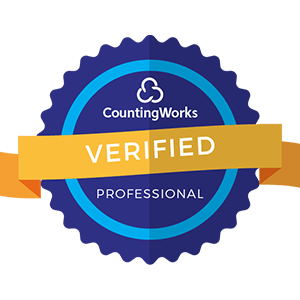
The COVID-19 pandemic accelerated a massive shift to remote and hybrid work, with millions of employees logging in from home offices. While remote work offers many benefits, like flexibility and better work-life balance, it also creates new cybersecurity risks. Company and client data that was once protected behind office firewalls is now accessed from personal devices and home WiFi networks, creating potential vulnerabilities.
The good news is that remote workers and companies can use proven strategies to reduce security risks and keep sensitive information safe significantly. By implementing the right tools, policies, and best practices, you can work from anywhere with confidence that your data is secure. Here's what you need to know.
Working outside the office exposes employees and company data to threats previously limited by on-site protections like firewalls, blocked IP addresses, and rapid IT support. Consider these eye-opening statistics:
The stark reality is that remote workers face a growing array of cybersecurity threats that, if successful, could result in severe financial and reputational damage to individuals and organizations. Sensitive data like customer records, trade secrets, and employee personal information could be compromised.
However, by taking proactive steps to improve security, you can drastically reduce risks and give yourself peace of mind. Let's look at the most effective strategies.
.jpg?width=838&height=424&name=Use%20a%20Virtual%20Private%20Network%20(VPN).jpg)
A reliable virtual private network (VPN) is essential in a remote worker's cybersecurity toolkit. A VPN encrypts your internet connection and routes it through a secure tunnel, hiding your IP address and online activity from hackers and your internet service provider.
When you connect to public WiFi at a coffee shop, airport, or even your home network, you have no idea who else might be snooping on that connection. A VPN is a secure gateway that prevents anyone from intercepting your data.
A VPN encrypts your internet traffic and allows you to access company networks and servers as if you were on-site. This lets you securely use internal applications and file shares without exposing them to the internet.
To set up a VPN, first check if your company already provides one for remote employees. Many businesses have a preferred VPN configured to work with their systems. If not, look for a reputable VPN service and install the application on all your work devices. Always make sure the VPN is active before starting work.
As tempting as it may be to read a work email on your tablet or let a family member borrow your work laptop, keeping your work and personal devices separate is critical. Crossing the streams puts company data at risk in multiple ways:
The simplest solution is to have dedicated work devices only used for job duties. Avoid installing non-work related software on them and never allow others to use them. Treat them as entirely separate from your technology.
If you must use a personal device for work, check with your IT department first. Many companies have a "Bring Your Own Device" (BYOD) policy that requires specific security precautions, such as installing remote management software, enabling full disk encryption, and keeping work data in a separate user profile or virtual machine.

Even with a VPN and secure devices, individual remote workers are often the weakest link in an organization's cybersecurity defenses. Hackers exploit human psychology to trick people into giving up login credentials, financial data, or other sensitive information.
Phishing attacks have grown increasingly sophisticated and challenging for the untrained eye to spot. Emails and websites are carefully crafted to mimic official company communications. Scammers create a false sense of urgency, curiosity, or fear to rush people into clicking malicious links or attachments.
Some of the most common social engineering tactics to watch for include:
If anything seems suspicious, stop and think before acting. Hover over links to see if the URL looks legitimate. Check the sender's email address for slight misspellings. Contact the other party through a trusted channel to verify the request when in doubt.
Companies should make security awareness training mandatory for all employees so that they can learn how to identify and report potential phishing attempts. Simulated phishing drills are also very effective for testing the organization's attack resistance.
Working remotely means your home office is now an extension of the company network. Securing your physical workspace and home WiFi is essential to prevent unauthorized access to work devices and data.
Start by configuring your WiFi network correctly with a strong password and up-to-date encryption (WPA2 or WPA3). Change the default admin credentials on your router and keep the firmware updated. Consider setting up a guest network for personal devices to isolate work traffic further.
Physically lock your work devices when not in use and never leave them unattended in public spaces like a vehicle or coffee shop. Use privacy screens on laptops to prevent visual hacking in shared spaces. Secure paper documents containing sensitive data in a locked drawer or safe.
If you use a voice-controlled virtual assistant or intelligent security cameras in your home office, review the privacy settings and turn off audio recording features while working. Similarly, disable GPS and Bluetooth on work devices when not needed.
The goal is to add as many layers of protection as possible so that even if one security control fails, other defenses are still in place. A holistic approach addressing technology, physical space, and human behavior is most effective.

Even organizations and individuals with strong cybersecurity practices can still fall victim to increasingly common threats, such as ransomware attacks, in which hackers lock down systems and demand payment to restore access.
Having clean, current backups of critical data is crucial to recovering from an incident quickly without major losses. Yet, 58% of SMB respondents in one survey said they do not have a disaster recovery plan.
Remote workers should connect an encrypted external hard drive to their computer at least once per week and allow automatic cloud backups to complete when prompted. Avoid postponing these backups.
It's also smart to be aware of and strictly follow company file management policies regarding where and for how long certain types of data can be stored. When you're not connected to the office network, data can easily become scattered across multiple personal devices and accounts.
Ideally, all work should be saved on company-provided cloud storage or synced network drives. Confidential data like customer records, employee information, and sensitive business documents should never be kept long-term on personal devices.
Weak and reused passwords are among remote workers' biggest vulnerabilities. With dozens of logins to manage, it's common to fall back on insecure practices like simple passwords, using the same password for multiple accounts, or writing down passwords on Post-it notes.
This makes it far too easy for hackers to guess one password and then use it to access other systems. Surveys have found that 53% of people admit to reusing the same password for different accounts.
A password manager solves this problem by generating unique, complex passwords for each account and securely storing them in an encrypted vault. The user only has to remember a single master password.
Leading password managers offer advanced features well-suited for remote work like:
Many password managers offer a free tier for individual use and affordable business plans for companies to deploy to the whole team. Using one is a simple way to boost login security across all devices.
One of the most fundamental cybersecurity best practices is also the easiest to overlook—keeping software and operating systems up to date with the latest patches.
As new vulnerabilities are constantly discovered in popular software, vendors release updates to fix these security holes. Hackers quickly attempt to exploit these gaps before organizations have a chance to install the patches widely.
Remote workers are especially prone to falling behind on updates since they don't have an IT team watching over their devices and installing updates automatically as they would on-site. One survey found over 90% of workers admit to clicking "remind me later" when prompted to update.
Make a habit of checking for and installing OS and software updates at least once per week. Turn on automatic updates whenever possible. Before traveling or taking a long break, take a moment to ensure everything is up to date.
Encryption is a core part of securing remote work. It provides a robust layer of protection for data by encoding it in an unreadable format without the correct digital key.
Several types of encryption are essential to understand and use:
As a remote worker, enable full disk encryption on all work computers, tablets, and smartphones. This is especially critical for devices that leave the house and could be lost or stolen. Check with your IT team for specific encryption requirements and how to set it up.
To send sensitive information to clients and coworkers, use end-to-end encrypted messaging services like Signal or Wickr instead of unencrypted SMS or email. Secure cloud storage services that support E2EE are ideal for file sharing.
When collaborating on documents, use Microsoft Office's built-in encryption features or a secure service like Dropbox Vault. Encrypt files before sending them to an external recipient with a tool like AxCrypt.
The goal is for encryption to become second nature and to be used by default for anything you wouldn't want to be public. It's an easy step that can prevent disasters.
Incidents can still occur even with multiple layers of proactive cybersecurity protections in place. Whether it's an advanced malware infection, an insider threat, or a case of CEO fraud, you need to be prepared to respond quickly and remediate issues.
This is where having an incident response plan becomes crucial. IR plans provide clear, step-by-step guidance for identifying, containing, investigating, and recovering from various potential incidents.
Critical components of an IR plan include:
As a remote employee, it is essential to be familiar with your company's IR plan and your specific responsibilities. Keep a copy of the plan easily accessible and report any suspicious activity through designated channels immediately.
If your organization doesn't have a formal IR plan, work with leadership to develop at least a basic one and ensure all employees are trained on it. Regularly conduct practice drills to keep response skills sharp.
Embracing remote work requires rethinking traditional approaches to cybersecurity. It is critical to shift from a perimeter-based defense model to one that empowers individual employees to take responsibility for protecting company assets.
Organizations can reap the benefits of remote work without losing control of their data by combining proven technologies like VPNs and encryption with intelligent policies and ongoing security awareness training.
The specific tools and practices that are best for your team will depend on your unique needs, but the core principles covered here can put you on the right path. Stay vigilant, proactively adopt layers of security, and make cybersecurity a team sport.
Remember, humans are always the first and last line of defense. Arm yourself and your coworkers with the knowledge to be a vital link in the chain. Remote work may be the new normal, but it doesn't have to come at the cost of security and privacy.


